When it comes to compact SUVs, the Nissan Juke and Renault Captur are two standout contenders that have captured the hearts of automotive enthusiasts worldwide. Both vehicles embody a unique blend of style, technology, and performance, making them popular choices in their segment for 2024. In this article, we explore the key technical aspects, innovations, and features that set these two models apart.
Nissan Juke vs Renault Captur – Which model is better for everyday use?
Both models have their strengths – but which one suits you more?
Compare performance, efficiency, price and space directly: Nissan Juke or Renault Captur?
Design and Dimensions
Both the Nissan Juke and Renault Captur showcase eye-catching designs that cater to a younger audience. The Juke measures 4210 mm in length, 1800 mm in width, and has a height of 1593 mm, giving it a robust and sporty stance. Meanwhile, the Captur is slightly longer at 4239 mm, with a width of 1797 mm and a height of 1575 mm, creating a more streamlined silhouette.
Both vehicles feature five doors and comfortably seat five passengers. The Juke boasts a trunk capacity of 422 liters, which is slightly more than the Captur's maximum of 422 liters, making it versatile for everyday use.
Engine Variants and Performance
The Nissan Juke offers a range of engine options, including a 1.0L three-cylinder and a 1.6L four-cylinder engine, delivering outputs of 114 HP and up to 143 HP. This model combines performance and efficiency, with fuel consumption figures ranging from 4.7 to 6 L/100 km. Additionally, the Juke can accelerate from 0-100 km/h in as little as 10.1 seconds, ensuring a spirited driving experience.
On the other hand, the Renault Captur presents a diverse lineup of engines, including full hybrid, petrol MHEV, LPG, and petrol options. With power outputs ranging from 91 HP to 158 HP, the Captur provides a versatile driving experience. Its acceleration is impressive, with the quickest variant reaching 0-100 km/h in just 8.5 seconds, thanks to its 1.3L engine variant. Fuel consumption can be quite competitive, hovering between 4.7 to 7.8 L/100 km, depending on the engine choice, providing efficiency for urban and highway driving.
Transmission and Drive
Both models offer a choice of manual or automatic transmission options, with the Juke featuring dual-clutch automatic gearboxes for smoother shifts. It has front-wheel drive as standard, ensuring nimble handling and a responsive driving experience.
The Captur also provides front-wheel drive, with choices like a manual gearbox and dual-clutch automatic options. This model’s enhances driving convenience and efficiency, especially in urban environments, where stop-and-go traffic is common.
Technology and Innovations
The Nissan Juke is equipped with an array of innovative features, including advanced safety systems, a user-friendly infotainment setup, and connectivity options like Apple CarPlay and Android Auto. Its interior is designed with modern aesthetics, featuring high-quality materials and ergonomically placed controls.
The Renault Captur does not lag in technology either, boasting a state-of-the-art multimedia system, customizable digital dashboard, and various driver assistance features. Notable innovations include enhanced driver safety features and impressive infotainment capabilities to keep passengers entertained and informed.
Conclusion: Which Should You Choose?
In conclusion, both the Nissan Juke and Renault Captur present compelling options for those in the market for a compact SUV in 2024. If you prioritize performance and sporty aesthetics, the Juke might be your ideal choice. However, if efficiency and a versatile engine lineup are more in your wheelhouse, the Captur could better suit your needs.
In the end, the best choice often depends on personal preferences and specific requirements. Take both for a test drive to experience their distinctive features and technologies firsthand!
Here’s where it gets real: The technical differences in detail
Costs and Efficiency:
Price and efficiency are often the first things buyers look at. Here it becomes clear which model has the long-term edge – whether at the pump, the plug, or in purchase price.
Renault Captur has a hardly perceptible advantage in terms of price – it starts at 21100 £, while the Nissan Juke costs 21400 £. That’s a price difference of around 257 £.
Fuel consumption also shows a difference: Renault Captur manages with 4.50 L and is therefore minimal more efficient than the Nissan Juke with 4.70 L. The difference is about 0.20 L per 100 km.
Engine and Performance:
Power, torque and acceleration are the classic benchmarks for car enthusiasts – and here, some clear differences start to show.
Both models deliver identical power – 143 HP each.
In acceleration from 0 to 100 km/h, the Renault Captur is somewhat quicker – completing the sprint in 8.90 s, while the Nissan Juke takes 10.10 s. That’s about 1.20 s faster.
There’s no difference in top speed – both reach 180 km/h.
There’s also a difference in torque: Renault Captur pulls distinct stronger with 265 Nm compared to 200 Nm. That’s about 65 Nm difference.
Space and Everyday Use:
Whether family car or daily driver – which one offers more room, flexibility and comfort?
Both vehicles offer seating for 5 people.
In curb weight, Nissan Juke is minimal lighter – 1274 kg compared to 1323 kg. The difference is around 49 kg.
Boot capacity is identical – both offer 422 L of storage.
In maximum load capacity, the Renault Captur performs minimal better – up to 1363 L, which is about 58 L more than the Nissan Juke.
When it comes to payload, Renault Captur minimal takes the win – 453 kg compared to 427 kg. That’s a difference of about 26 kg.
Who comes out on top?
Overall, the Renault Captur shows itself to be dominates this comparison and secures the title of DriveDuel Champion.
It convinces with the more balanced overall package and proves to be the more versatile choice for everyday use.
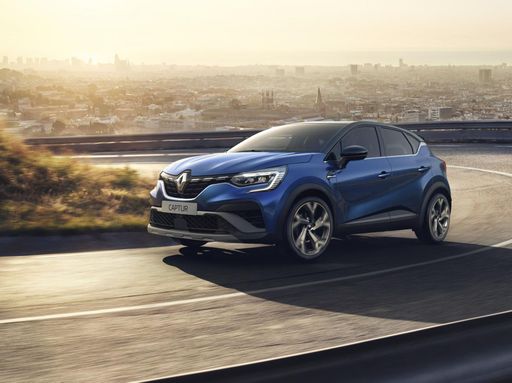 @ Renault Group Media
@ Renault Group Media
Renault Captur
Nissan Juke
The Nissan Juke is a pocket-sized crossover that refuses to blend in, with quirky styling and a cheeky stance that turns heads at every traffic light. It’s ideal for shoppers who value personality and nimble urban driving over maximum practicality, delivering surprising pep and a well-equipped feel for everyday fun.
details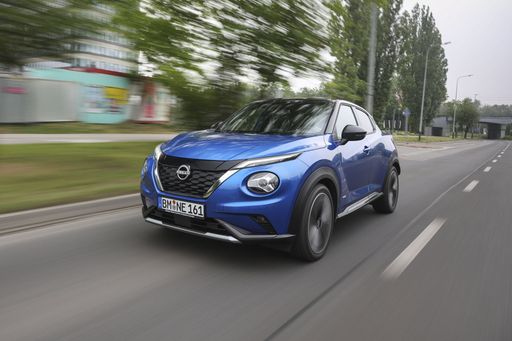 @ Nissan Motor Corporation
@ Nissan Motor Corporation
 @ Nissan Motor Corporation
@ Nissan Motor Corporation
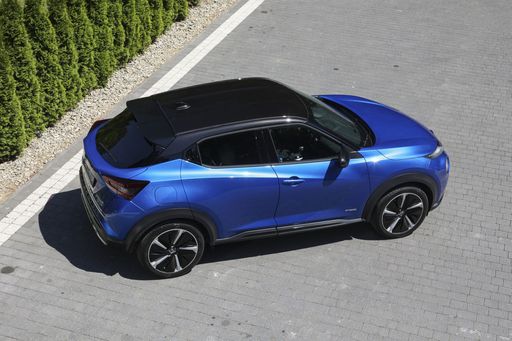 @ Nissan Motor Corporation
@ Nissan Motor Corporation
 @ Nissan Motor Corporation
@ Nissan Motor Corporation
Renault Captur
The Renault Captur is a cheeky little crossover that pairs city-friendly agility with a roomy, well-thought-out cabin and enough style to turn heads at the lights. It’s a sensible choice for buyers who want practical versatility and a dash of personality on their daily drives, without taking itself too seriously.
details @ Renault Group Media
@ Renault Group Media
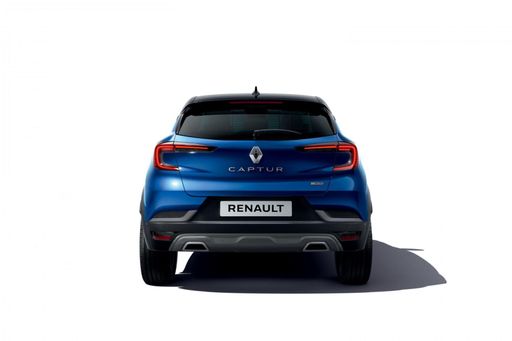 @ Renault Group Media
@ Renault Group Media
 @ Renault Group Media
@ Renault Group Media
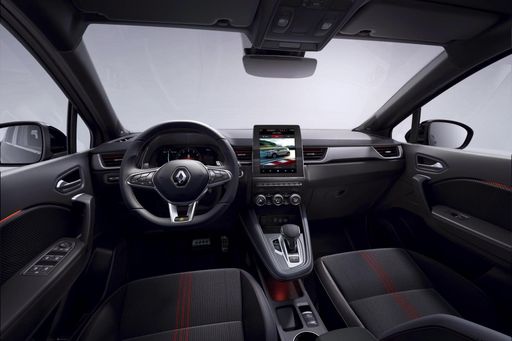 @ Renault Group Media
@ Renault Group Media
 @ Nissan Motor Corporation
@ Nissan Motor Corporation
|
 @ Renault Group Media
@ Renault Group Media
|
|
|
|
Costs and Consumption |
|
|---|---|
|
Price
21400 - 30100 £
|
Price
21100 - 28300 £
|
|
Consumption L/100km
4.7 - 6 L
|
Consumption L/100km
4.5 - 6 L
|
|
Consumption kWh/100km
-
|
Consumption kWh/100km
-
|
|
Electric Range
-
|
Electric Range
-
|
|
Battery Capacity
0.60 kWh
|
Battery Capacity
-
|
|
co2
107 - 136 g/km
|
co2
102 - 137 g/km
|
|
Fuel tank capacity
46 L
|
Fuel tank capacity
48 L
|
Dimensions and Body |
|
|---|---|
|
Body Type
SUV
|
Body Type
SUV
|
|
Seats
5
|
Seats
5
|
|
Doors
5
|
Doors
5
|
|
Curb weight
1274 - 1405 kg
|
Curb weight
1323 - 1514 kg
|
|
Trunk capacity
354 - 422 L
|
Trunk capacity
326 - 422 L
|
|
Length
4210 mm
|
Length
4239 mm
|
|
Width
1800 mm
|
Width
1797 mm
|
|
Height
1593 mm
|
Height
1575 mm
|
|
Max trunk capacity
1237 - 1305 L
|
Max trunk capacity
1276 - 1363 L
|
|
Payload
405 - 427 kg
|
Payload
376 - 453 kg
|
Engine and Performance |
|
|---|---|
|
Engine Type
Petrol, Full Hybrid
|
Engine Type
Full Hybrid, Petrol, Petrol MHEV
|
|
Transmission
Manuel, Automatic
|
Transmission
Automatic, Manuel
|
|
Transmission Detail
Manual Gearbox, Dual-Clutch Automatic, Automatic Gearbox
|
Transmission Detail
Automatic Gearbox, Manual Gearbox, Dual-Clutch Automatic
|
|
Drive Type
Front-Wheel Drive
|
Drive Type
Front-Wheel Drive
|
|
Power HP
114 - 143 HP
|
Power HP
115 - 143 HP
|
|
Acceleration 0-100km/h
10.1 - 11.8 s
|
Acceleration 0-100km/h
8.9 - 12.3 s
|
|
Max Speed
166 - 180 km/h
|
Max Speed
180 km/h
|
|
Torque
200 Nm
|
Torque
160 - 265 Nm
|
|
Number of Cylinders
3 - 4
|
Number of Cylinders
3 - 4
|
|
Power kW
84 - 105 kW
|
Power kW
84 - 116 kW
|
|
Engine capacity
999 - 1598 cm3
|
Engine capacity
1199 - 1789 cm3
|
General |
|
|---|---|
|
Model Year
2024
|
Model Year
2025
|
|
CO2 Efficiency Class
D, E, C
|
CO2 Efficiency Class
C, D, E
|
|
Brand
Nissan
|
Brand
Renault
|
What drive types are available for the Nissan Juke?
Available configurations include Front-Wheel Drive.
The prices and data displayed are estimates based on German list prices and may vary by country. This information is not legally binding.
